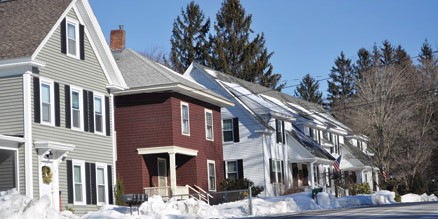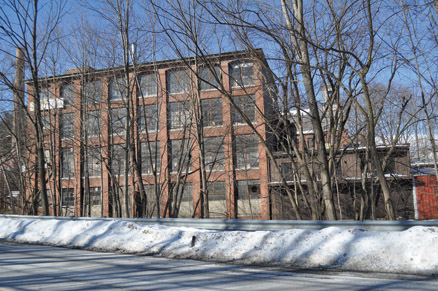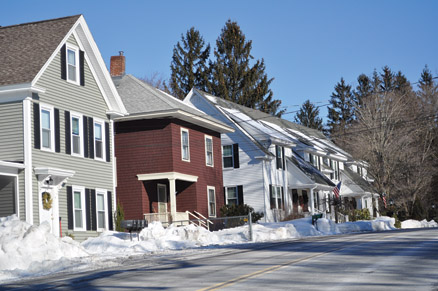
By Nancy Arsenault

Nancy Arsenault
Planning Board Coordinator Karen Kelleher announced that Stow, and specifically the Gleasondale Village area, has been chosen by UMASS as the subject of a 14-week intensive exploration by students and faculty of the Landscape Architecture and Regional Planning Department in Amherst.
Their project will result in a specific Master Plan for that part of Stow, including an inventory of most properties contained within the village boundaries, analysis of economic and environmental issues, concluding with recommendations that could ultimately preserve the character of the area, ensuring its vitality and value to the town, well into the future, according to Kelleher.
Gleasondale is generally referred to as the area of the Gleasondale Mill and the housing that is along Gleasondale Road, extending down to Marlborough Road and into the very small neighborhood called Rockbottom. Most of the housing dates back to the same time period as the Mill, with a few homes even older. Behind the Mill, sits one of the largest agricultural and open space parcels in town, Rockbottom Farm, located on Orchard Hill.
Professor John Mullin will head up the project and is especially suited to the study of this local mill village. Not only is he a Maynard native already familiar with the area, with his brother Joe owning and managing Clock Tower Place, but John himself is a renowned expert on the revitalization of New England mill villages. “I am very excited about this project,” he said, adding that Stow was chosen over many other applicants who applied to be selected for this annual program.
“Gleasondale’s setting is quite unique in that 20th and 21st century settlement influences have been relatively minimal. Given its character and historic legacy, it is well worth preserving.” As for the state of the Mill itself, Mullin said, “Mill villages are recovering and becoming vital all over New England. You see examples of it up and down the Assabet River from Westborough to Concord.”
Mullin is also aware of the rare juxtaposition that finds Rockbottom Farm right up alongside the Mill, in much the same way as the two properties existed in the 1800s. “This is very rare for being so close to the 495 belt,” said Mullin, of farmland so vast and still in its original form. “People aren’t aware of how much farmland is being eaten up every day in this area.”
Students are required to offer 10 hours per week to the project with most of the team of students, graduate assistants and professors contributing even more, according to Mullin. They will be dedicated to onsite study and classroom discussion of the area, collecting data, photographs, historical records and examining current environmental conditions.
There will be a special emphasis on the Mill that will include tours, conversations with the owners and a study of possible

Nancy Arsenault
development of the property, along with an investigation of infrastructure improvements. They will determine the carrying capacity of the road, adjacent bridges, the impact of nearby conservation areas and even the overall culture of the neighborhood; a neighborhood with many longtime residents whose families have lived there since the time the Mill was active.
By looking at the Mill, the nearby housing, Rockbottom Farm and the lifestyle of the residents in Gleasondale, when examined together, these factors will help mold a well thought out and supported set of recommendations that the group will hope to present to the Planning Board and later the Board of Selectmen, said Mullin.
The team will base their analysis on what they determine to be the strengths, weaknesses and possible threats to the area, he said. “It’s a great project, because we guarantee the result. We will deliver a set of recommendations and suggested implementation plan that can be used by the town,” said Mullin, based on real evidence and data collected within the village itself, and from those who live there.
“We couldn’t be more thrilled,” said Kelleher, who explained that a focused look at Gleasondale was the next major project facing the Planning Board, as Lower Village projects seek a conclusion in the next few years. The UMASS program is already collecting data and scheduling site visits to the area and will be in continual communication with Kelleher as they take on the project work. The report is expected by the end of May.